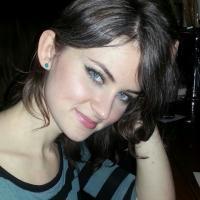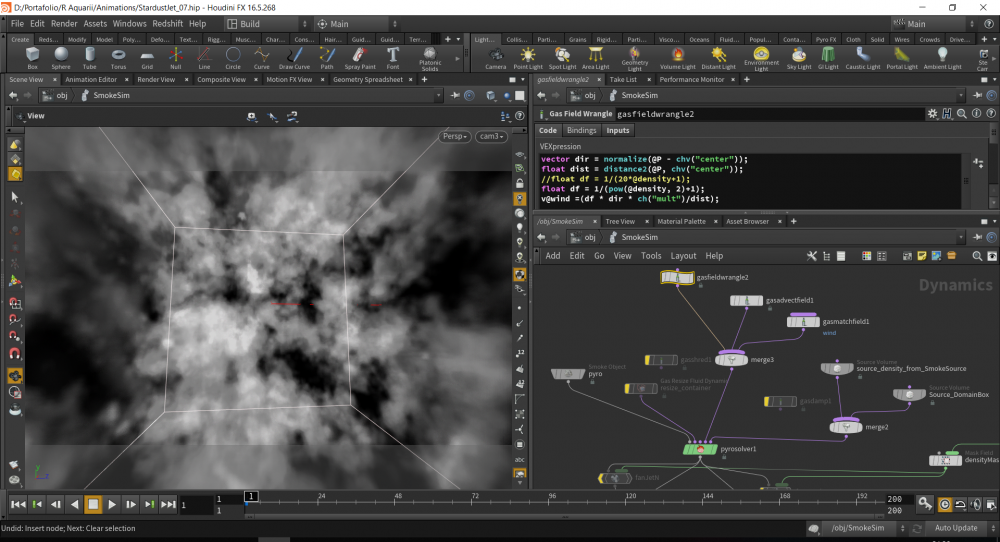Search the Community
Showing results for tags 'science'.
-
Hello fellow Houdini users. We need a sys admin to help us create pixels for science! Help support the Visualization Studio in producing planetarium shows that communicate the California Academy of Sciences' mission: to regenerate the natural world through science, learning, and collaboration! https://www.calacademy.org/exhibits/morrison-planetarium If you have technical experience maintaining artist's workstations, DCC tools, render farm support, etc, please consider applying here: https://lnkd.in/gJA8zXQk Sincerely, Jeroen Lapré Senior Technical Director Visualization Studio California Academy of Sciences Mobile: 415 299 9540
-
- 1
-

-
- employment
- linux
-
(and 8 more)
Tagged with:
-
The Advanced Visualization Lab (AVL) at the National Center for Supercomputing Applications at the University of Illinois at Urbana-Champaign is looking for a Houdini artist for an hourly contractor position, expected to be <10 hours per week. The position is remote. The work would involve helping the AVL team create cinematic scientific visualizations of datasets like black holes and stars. Prior visualization experience not required. Please see the attached job description and AVL demo reel to get a sense for the type of work. Apply here: https://forms.illinois.edu/sec/1933699974 Houdini_Artist_Job_Description.pdf
-
Hello, My simulation topic is a bit science-related. But the model idea is simple. I want to have a sphere that is not empty inside, I do not know is I should use a vbdfrompoly node or a volume node, if using volume, what parameter should I adjust to give sphere a solid interior? Then, I would like to give a ramp color based on the distance from the center of the sphere, which is changing from dark to light from the centre to the surface of the sphere, so this needs my sphere to be seen through, I do not know should I use alpha or any other parameter to achieve this visual effect. Lastly, I would like the overall color darkness to change based on my data, the more bigger my data is, the darker the overall color is, so my first thought is to use fit01 to fit the column of data I have, but how to change the overall color's darkness based on the data is my question. Thanks in advance! If you can only answer partial of my question, please help!
-
Hi all, Relative noobie here, looking for general advice on how I might approach modeling a cancer cell that looks like this: https://www.mskcc.org/sites/default/files/styles/width_800/public/node/167374/3x2/sciencesource_ss21694540_1200x800.jpg [www.mskcc.org] or this: https://static.independent.co.uk/s3fs-public/thumbnails/image/2016/02/15/21/1-t-cell-corbis.jpg?w968h681 [static.independent.co.uk] One physical feature of the cell that I’d like to pull off convincingly is the sticky-looking tendrils that shoot out from the membrane, that look a bit like viscous liquid has been shot out from the surface of the cell. Though something like the image in the above links would be ideal, I would settle for something like this: https://lymphomanewstoday.com/wp-content/uploads/2018/09/shutterstock_565670083_zps0eglo9ri-1000x480.jpg [lymphomanewstoday.com] I would want to avoid something like this (where the tendrils resemble veins, or maybe octopus tentacles: https://www.segnidalcielo.it/wp-content/uploads/2017/08/GoldNanoparticles.jpg [www.segnidalcielo.it] Since for now I only actually need a static model, my first inclination would be to start with a simple POP setup, have some particles explode off a spherical surface and append a trail SOP to get the tendril trails. I’d run the sim and use a single frame from it as the cancer cells base geo. This only gets me so far though, as there are other important visual details that I’ll refrain from talking about until I some experienced person can tell me that this is definitely the way to go. My other inclination, which I realize might be inviting insanity, is to create a “fluid explosion”, using a FLIP setup with some velocity noise coming from the SOP level, and playing with DOP node settings to get the right kind of viscous/stringy effect from the particles. From there, again, I’d run the sim and use a single frame of geo for the base for my model. I’ve so far made an attempt at this (file attached), though have only tried seeing what I could get by using nothing but some noised-up velocity on the SOP source, some DOP gravity and tweaking settings in DOP Source Volume and Solver nodes, pertaining particularly to viscosity and surface tension (though I’m not sure the latter is relevant). I’m able to get some neat looking effects, but not really the ones I’m specifically after. What I’d wonder here is whether this ‘explosion of viscous fluid with a very high tensile strength’ could even be achieved with a fluid sim, and if so, would I need to push/pull the “sticky/stringy” fluid outward by having the FLIP particles stick to a set of “collision” particles which are then launched outward, pulling some of the fluid along with it. Or, could this effect be achieved by simply applying velocity to a Fluid Source SOP with very low particle separation, and then relying on settings available in DOPs nodes to get the long / stretchy tendrils. In any event, I’m certainly open to suggestions even if they’re completely different approaches to what I’ve described above. Thanks ahead of time to anyone responding! Nik pF CancerCell_FLIPFluidFromObject_v021.hipnc
-
Hi guys, I'm kinda new to this software and this is my first post, after several days of trying to solve this problem: Am trying to simulation how stellar wind affects the gas clouds in interstellar space. https://www.spacetelescope.org/images/potw1106a/ (reference picture from Hubble) When new stars are born in high density regions, the ignition and radiation of these stars create winds that pushes the dust around them, sculpting away the surrounding molecular cloud. These winds can reveal this hidden star formation process and sometimes accelerate it, when this expansion compress another high density spots, this slowly collapsing cloud will form a new star. These places are also called stellar nurseries. So, i'm trying to visualice is the first parts of this process, the way stellar wind sculpts and reveal the clouds around them. I've modeled a random cloud to represent the very uneven density distribution. Where i'm having problem is in getting this "wind" to affect more the lowest density regions. I tried with a couple of fan forces in oposite directions and kinda worked, but could not get to work a mask using the density field, maybe is posible, but i couldn't do it. Then i tried a gas field wrangle to get a another velocity field "wind", from the origin and multiply it by a factor inverse to the density squared (see screenshot) This also kinda worked, but i get a very voxely looking render (video attached), maybe with a higher resolution and some blurring node somewhere could improve this. I also would like to achieve the effect that the winds is slowly expanding trough space (since the spatial scales here are huge), maybe i could bound it to an expanding sphere? (i dont like that the wind effect is instantaneous in all the scene) maybe some kind of raycast could be an option? i'm open to ideas, coz i don't even know how to begin to google that :/ That's what i've tried so far, would be really happy if someone could share some ideas or resources! Thanks in advance. pd1: another idea i would love to implement is to fake the dust colapse by gravity with some clumping also based on density (i tried with gasshred and gas surface tension with poor results) pd2: Eventually, i would like to get this expansion and subsequent peripheral density increase around to spark the birth of new stars. I don't know if is posible to create fuel from a certain density threshold or something like that. But that's a second post i guess. StarDust_07.hip StellarWind_Advect2_1.mp4


.thumb.jpg.ddf40d77d4edbb1e4d850a3ff91c66b7.jpg)
